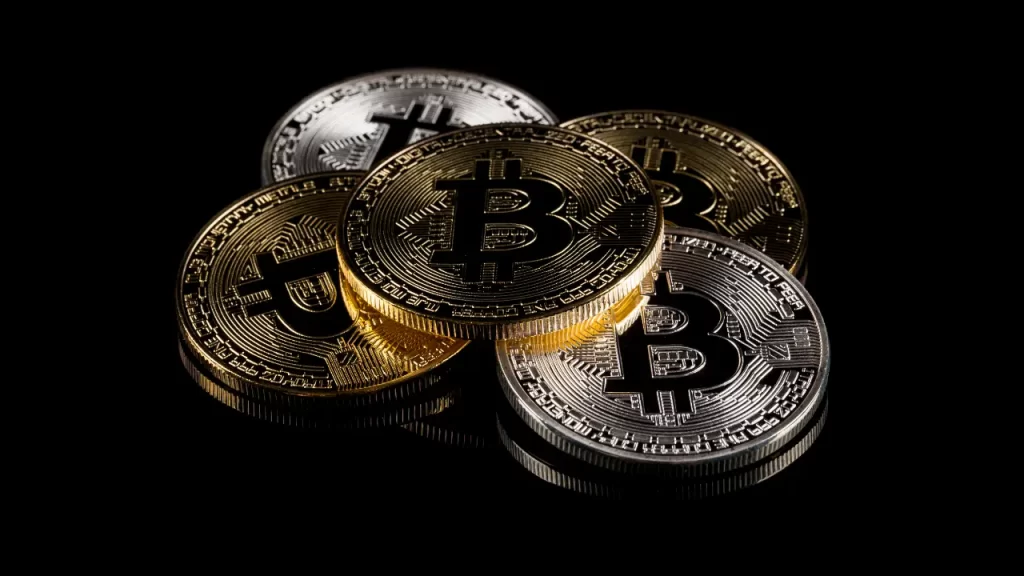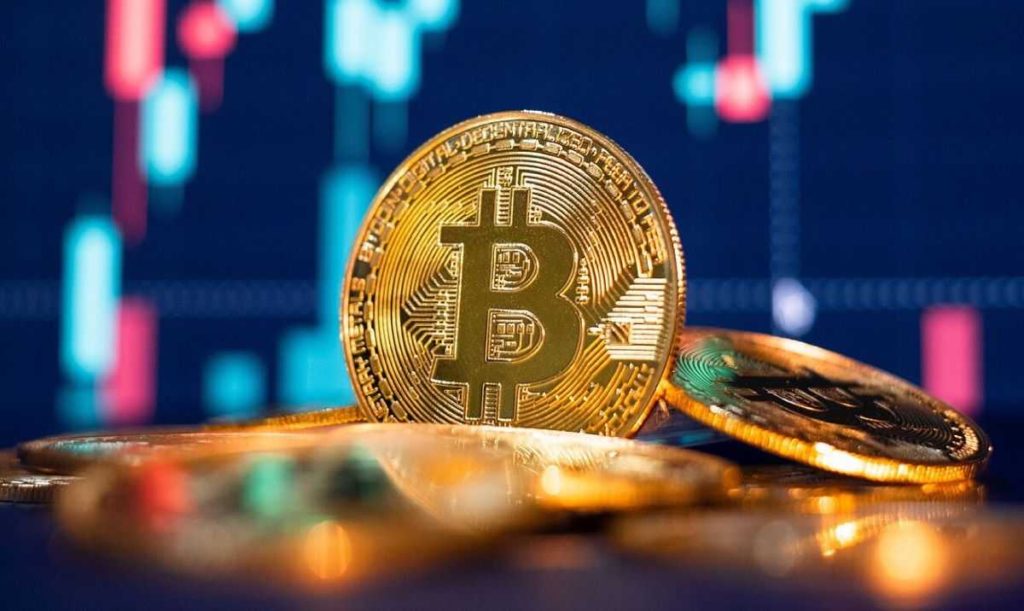The Securities and Exchange Commission’s (SEC) reluctance to approve the first Bitcoin Exchange-Traded Fund (ETF) has put immense pressure on Bitcoin’s price, causing distress among crypto investors.
Fortunately, TradeSanta offers automated trading tools connected to both spot and futures trading platforms, enabling traders to mitigate risks and capitalize on market downturns.
Throughout the year, Bitcoin made several attempts to establish a firm foothold above the $30,000 mark, all of which ended in failure.
As the year draws to a close, there is a growing concern that the cryptocurrency may continue trading below this critical psychological level.
One significant contributing factor to this sustained bearish pressure is the SEC’s ongoing delay in approving a spot Bitcoin ETF.
The SEC’s reluctance to approve Bitcoin ETFs has affected numerous applicants, including industry giants like BlackRock, which had initially encouraged other institutions to submit their applications.
Many asset managers, brokers, index fund providers, and other institutions have sought approval for a Bitcoin ETF to attract more institutional and retail capital to the crypto market.
Notable applicants include:
- BlackRock: The world’s largest asset manager, with $8.6 trillion under management, submitted its application for a spot Bitcoin ETF in mid-June, with Coinbase as its primary data provider and crypto custodian. The SEC accepted BlackRock’s application for review one month later.
- Fidelity: After being rejected in 2021, financial services giant Fidelity reapplied for its Wise Origin Bitcoin Trust to become an ETF in July of the current year.
- VanEck: An early applicant since 2018, VanEck rejoined the race for a Bitcoin ETF in July 2023, after previously withdrawing its application.
- ARK Invest: Investment management firm ARK has been awaiting SEC approval for its ARK 21Shares Bitcoin ETF since June 2021.
- Invesco and Galaxy Digital: These two firms joined forces to seek approval for the Invesco Galaxy Bitcoin ETF, a physically backed Bitcoin ETF with Invesco as the sponsor.
Numerous others, such as WisdomTree, Valkyrie Investments, Bitwise, and GlobalX, are also planning to launch Bitcoin ETFs.
However, at the end of August, the SEC delayed its decision on all these applications.
The SEC’s delay had a noticeable impact on the Bitcoin market.
READ MORE: FTX Files $157.3 Million Lawsuit Against Former Employees Over Alleged Fraudulent Withdrawals
By the end of August, Bitcoin was attempting to retest the $30,000 resistance level but faced a downturn due to the uncertainty surrounding ETF approvals.
This uncertainty pushed the price down to around $25,000, and in mid-September, it even broke below this level, marking the lowest point since mid-June when BlackRock’s filing had triggered a rally.
Despite bearish market conditions, active traders can find opportunities by opening short positions. TradeSanta’s trading bots and automation tools offer a way to do this efficiently and without emotional interference.
The platform provides algorithmic strategies and risk management controls, enabling traders to navigate market downturns effectively.
TradeSanta supports over 100 cryptocurrencies and integrates with major exchanges, simplifying the trading process.
Moreover, it offers technical analysis tools to help traders identify trends and market sentiment. With stop-loss and trailing stop-loss features, traders can minimize losses during bearish trends.
Additionally, TradeSanta allows for copy trading, enabling users to replicate successful strategies for maximum profitability.
Feedback and statistics indicate that TradeSanta’s risk management tools have been effective in helping users minimize losses and navigate volatile market conditions, offering a valuable resource for traders in challenging times.
Other Stories:
IRM Report Highlights Bitcoin’s Potential as a Driver of Global Energy Transition
Binance and CEO CZ Zhao Seek Dismissal of SEC Lawsuit Overreach
As the week drew to a close on September 24, Bitcoin (BTC) stubbornly clung to the $26,500 mark, with exchange traders continuing to accumulate the digital asset.
Data from Cointelegraph Markets Pro and TradingView revealed that BTC’s price exhibited remarkable stability throughout the weekend, remaining unfazed by the macroeconomic turbulence originating from the United States.
Bitcoin had a relatively tranquil conclusion to the Wall Street trading week, as it shrugged off the potential market-moving events in the U.S.
However, market watchers, including the renowned trader and analyst Credible Crypto, anticipated a gradual buildup towards a potential trend shift by closely monitoring the Binance order book.
Credible Crypto shared his insights with subscribers, stating, “It appears that we are not yet poised for significant price movement.
In the meantime, two more blocks of buy orders have been filled, signaling a sustained accumulation phase.
Perhaps the weekend will be slow, and we may start witnessing some notable movement come Monday. Let’s remain watchful.”
A day earlier, another trader, Skew, had expressed hopes for a “liquidity hunt” leading up to the weekly close, though this scenario had yet to materialize at the time of writing.
Additionally, Keith Alan, co-founder of the monitoring platform Material Indicators, detected subtle changes in the order book, notably an increase in buy orders near the spot price.
READ MORE: CBDC Anti-Surveillance State Act Clears Hurdle, Advances to Congressional Vote
Turning to market participation, the well-known trader and analyst CryptoCon identified a significant reduction in speculative activity within the Bitcoin market.
Short-term holders (STHs), defined as those who have held their BTC for 155 days or less, now hold a smaller proportion of the available Bitcoin supply than they have in more than a decade.
Analyzing data from the on-chain analytics firm Glassnode, CryptoCon described these STH holdings as being in a “fine powder” state, indicating a diminished influence on market dynamics.
This shift reflects a growing presence of long-term Bitcoin holders, indicating increased confidence in the cryptocurrency’s enduring value.
It’s worth noting that some STH investors have already faced substantial losses, as previously reported by Cointelegraph.
In summary, Bitcoin’s price remained stable around $26,500 despite limited market cues and macroeconomic uncertainties.
Accumulation by exchange traders persisted, while traders and analysts monitored the potential for a trend shift.
Additionally, the decline in short-term holders and the rise of strong Bitcoin holders underscored a shift in market sentiment toward greater confidence in the digital asset.
Other Stories:
IRM Report Highlights Bitcoin’s Potential as a Driver of Global Energy Transition
Alchemy Pay Secures Key U.S. Money Transmitter License, Expanding Crypto-to-Fiat Services
South Korean City Aims to Become a Leading Blockchain Hub with $75 Million Investment
The forthcoming crypto bull run is poised to diverge significantly from its predecessor, and investors should exercise restraint in their anticipations of an imminent surge in cryptocurrency prices, according to Lars Seier Christensen, the founder of enterprise blockchain company Concordium, in a recent interview with Cointelegraph.
Despite the prevailing optimism in the crypto market surrounding the multitude of proposed spot Bitcoin (BTC) exchange-traded funds (ETFs), Christensen remains skeptical about their immediate impact on crypto markets.
He emphasizes that even if a Bitcoin rally does materialize, it does not guarantee a simultaneous surge in all crypto assets.
Christensen suggests that older altcoins like Ethereum may not experience a similar rally, contrary to expectations.
While digital asset prices have experienced a slump over the past 18 months, there remains an unwavering corporate interest in blockchain technology.
Consequently, Christensen envisions the next phase of industry growth to be marked by gradual, steady progress rather than the explosive price surges seen in 2021.
He notes that corporate entities require cryptocurrencies primarily for executing activities on specific blockchains, rather than solely for speculative gains.
However, not everyone shares Christensen’s perspective.
Ben Simpson, the founder of crypto education platform Collective Shift, argues that various data and indicators suggest the early stages of a Bitcoin bull market.
He points to metrics like the drawdown from the all-time high chart and market-value-to-realized-value ratio, which often precede bull markets.
Simpson identifies Bitcoin, Ether (ETH), and application-specific tokens, particularly those related to gaming, as assets poised for significant growth.
He also mentions DeFi tokens as offering substantial upside potential.
READ MORE: Bybit Unveils Automated Risk Management Tool ‘Perp Protect’
The crypto industry has faced challenges in recent years, including a more hawkish Federal Reserve and the high-profile collapses of platforms like FTX and Celsius Network, resulting in decreased investments and falling crypto asset prices.
However, eToro Markets analyst Josh Gilbert is optimistic, anticipating a resurgence in the crypto market as central banks worldwide consider lowering interest rates.
Looking ahead, 2024 appears promising for Bitcoin and the broader crypto market, driven in part by the Bitcoin halving event.
Still, market analyst Tina Teng from CMC Markets advises caution, emphasizing the need for a conducive macroeconomic environment and central banks’ willingness to provide liquidity to markets for a true bull market to emerge.
Teng points out that the previous crypto market boom coincided with the Fed’s rate cut cycle rather than a rate hike cycle.
She underscores the significance of Bitcoin breaking through the 50-day moving average for a new bull market thesis to gain validation.
Teng concludes by highlighting ongoing concerns related to government bond yields and inverted bond yields, signaling economic uncertainty.
Other Stories:
Binance.US Faces Record-Low Trading Activity Amid Mounting Regulatory and Internal Challenges
US House Financial Services Committee Advances Bills to Regulate Central Bank Digital Currency
SEC Faces Setback as Judge Denies Immediate Access to Binance.US Software
Bitcoin experienced a downturn in the wake of the Wall Street opening on September 21, accompanied by renewed discussions of a $20,000 price target for BTC.
Over the past 24 hours, BTC’s price action, as reported by Cointelegraph Markets Pro and TradingView, has been lackluster, with the $27,000 level slipping out of sight.
This uninspiring performance came on the heels of the United States Federal Reserve’s decision to pause interest rate hikes, causing BTC/USD to drop by nearly $700 the day before.
In the absence of substantial volatility, market participants adopted a more cautious outlook.
Well-known trader Crypto Tony expressed the sentiment that a gradual ascent to $28,500 over the course of October would be ideal, followed by a surge of hype and FOMO (Fear Of Missing Out), only to witness another price decline.
Monitoring resource Material Indicators raised concerns about a potential “death cross” formation on the weekly chart.
This ominous occurrence takes place when specific moving averages (MAs) intersect, and in this case, the 21-week MA was on a trajectory to dip below its 200-week counterpart.
Material Indicators suggested the possibility of a lower low (LL) at the weekly close, with the 50-week MA potentially providing temporary support and triggering a short-term rally.
However, a LL could pave the way for further downward movement to test the $20,000 mark.
READ MORE: Bitcoin Holds Steady at $27,000 as Crypto Community Awaits Fed’s Decision
Additionally, there was anticipation regarding the liquidation of crypto assets by the defunct exchange FTX, which could exert selling pressure on BTC.
Speculation arose that FTX liquidators might attempt to bolster prices before distribution to prevent excessive erosion, although this remained speculative.
Amidst various viewpoints, some traders remained optimistic. CryptoCon, a popular trader and analyst, asserted that Bitcoin was still in the early stages of its next bull market, emphasizing this view with a chart.
Another trader named Jelle saw the current prices as an attractive buying opportunity for prospective BTC investors.
At the time of writing, BTC/USD was trading around $26,600, with gains in September totaling approximately 2.5%.
This marked Bitcoin’s best month since 2016, as data from monitoring resource CoinGlass indicated that the cryptocurrency had experienced losses every September in recent years.
Other Stories:
Creators Embrace Decentralized Platforms as Web3 Reshapes Adult Content Industry
ASIC Launches Legal Action Against Kraken’s Australian Operator Bit Trade
South Korea’s Cryptocurrency Holdings Surpass $98 Million, Dominating Overseas Assets
Bitmain, a prominent cryptocurrency mining hardware manufacturer, and the now-bankrupt crypto mining entity, Core Scientific, have reached a significant agreement that involves a combination of equity and cash to advance their mining facility expansion plans.
Under this agreement, Bitmain will provide Core Scientific with 27,000 Bitcoin mining rigs in exchange for $23 million in cash and $53.9 million worth of common stock from the distressed mining company.
Beyond the hardware procurement, the two companies have also inked a fresh hosting arrangement aimed at supporting Bitmain’s mining endeavors.
The deal’s finalization occurred in August, marked by a court filing that spotlighted Bitmain’s intention to trade mining hardware for cash and equity within the context of Core Scientific’s restructuring blueprint.
This restructuring plan encompassed other entities like Anchorage, BlockFi, and Mass Mutual Asset Finance.
Notably, aside from Anchorage, all three firms opted for a combination of cash and equity as a means to settle their claims.
Bitmain’s ambitious expansion and investment strategy are poised to come to fruition by the fourth quarter of 2023, contingent upon approval from a judge.
READ MORE: Bybit Unveils Automated Risk Management Tool ‘Perp Protect’
Once greenlit, this hardware infusion could potentially bolster Core Scientific’s hash rate by an impressive 4.1 exahashes.
Additionally, the two crypto mining collaborators have committed to collaborating on the enhancement of Bitmain’s legacy miners situated within Core Scientific’s data centers, with the ultimate goal of optimizing the firm’s operational efficiency.
Core Scientific’s financial woes led to their Chapter 11 bankruptcy filing in December 2022, with the primary drivers being the financial crisis and the declining value of Bitcoin.
The company faced mounting challenges in the lead-up to its eventual collapse, primarily due to the turbulent conditions prevailing in the cryptocurrency market during that period.
Other Stories:
Binance.US Faces Record-Low Trading Activity Amid Mounting Regulatory and Internal Challenges
SEC Faces Setback as Judge Denies Immediate Access to Binance.US Software
US House Financial Services Committee Advances Bills to Regulate Central Bank Digital Currency
A recent publication from the Institute of Risk Management (IRM) has drawn attention to the potential of Bitcoin (BTC) to serve as a catalyst for a worldwide energy transition.
The report, authored by members of the IRM Energy and Renewables Group, Dylan Campbell and Alexander Larsen, bears the title “Bitcoin and the Energy Transition: From Risk to Opportunity.”
This comprehensive analysis challenges the prevailing notion that BTC poses a threat due to its energy-intensive nature and instead sheds light on its capacity to instigate transformative changes in the global energy landscape.
The IRM report underscores the indispensable role of energy in contemporary society and the growing demand for sustainable, cost-effective, and clean energy sources.
Notwithstanding the criticisms regarding Bitcoin’s substantial energy consumption, the study offers a more nuanced perspective by elucidating the potential advantages BTC could bring to the energy sector.
One of the most noteworthy findings within the report is the assertion that Bitcoin mining has the potential to reduce global emissions by as much as 8% by 2030.
This ambitious target can be achieved through the conversion of wasted methane emissions into less harmful byproducts.
The report elucidates a theoretical scenario in which captured methane is harnessed to power Bitcoin mining operations, effectively mitigating the release of methane into the atmosphere.
READ MORE:Bybit Unveils Automated Risk Management Tool ‘Perp Protect’
Furthermore, the report outlines additional opportunities for Bitcoin to make meaningful contributions to the energy sector.
It suggests that Bitcoin could enhance energy efficiency by facilitating electricity grid management through the deployment of Bitcoin miners and the transfer of excess heat generated by mining operations to greenhouses, thus optimizing resource utilization.
The authors of the IRM report articulate their perspective succinctly: “We have shown that while Bitcoin is a consumer of electricity, this does not translate to it being a high emitter of carbon dioxide and other atmospheric pollutants.
Bitcoin can be the catalyst to a cleaner, more energy-abundant future for all.” In essence, the report underscores the potential of BTC not only to coexist with the imperative for a sustainable energy future but also to actively drive positive change within the energy sector.
In conclusion, the IRM’s report challenges the prevailing narrative surrounding Bitcoin’s environmental impact, positing that BTC has the potential to be a constructive force in shaping a cleaner, more energy-rich global future.
Other Stories:
Binance.US Faces Record-Low Trading Activity Amid Mounting Regulatory and Internal Challenges
US House Financial Services Committee Advances Bills to Regulate Central Bank Digital Currency
SEC Faces Setback as Judge Denies Immediate Access to Binance.US Software
A novel development has taken the cryptocurrency world by storm as the Alpha project has introduced a groundbreaking community-based social token ecosystem within the Bitcoin network.
Alpha, positioned as a decentralized social network protocol, shares similarities with the well-known Ethereum-based platform Friend.tech.
Its primary function is to enable users to monetize their online presence and content creation by utilizing social tokens.
Distinguishing itself from Friend.tech, Alpha employs a unique structural composition.
It hinges on the security and immutability of the Bitcoin blockchain for finality, while data storage is facilitated through the Polygon blockchain.
Notably, the project has introduced Trustless Computer as its proprietary scaling network for Bitcoin. Co-founder Punk3700, operating under a pseudonym, eloquently described Alpha as “a rollup that rolls up to another rollup that rolls up to Bitcoin.”
In an exclusive conversation with Cointelegraph, Punk3700 shed light on the intricate architecture of Alpha. He explained, “Alpha implies a layered architecture that includes NOS-TC.
Trustless Computer (TC) is an optimistic rollup layer that directly integrates with the Bitcoin blockchain. NOS is implemented as another optimistic layer, enhancing scalability on the Bitcoin network.”
These optimistic rollup layers, he emphasized, collaborate harmoniously to ensure both security and efficiency in the deployment of decentralized applications.
Punk3700 elucidated further, stating, “NOS adopts a hybrid design that leverages Bitcoin for data validity and Polygon for data storage, ultimately settling on Bitcoin.”
This ingenious approach not only enhances flexibility in data storage but also serves to mitigate the exorbitant transaction fees associated with Bitcoin.
The user-centric ethos of Alpha is exemplified by its community-driven development approach.
Punk3700 revealed that the project was conceived and launched in an astonishingly brief 48-hour window.
To further incentivize user engagement, a referral program is currently in development, allowing users to earn 1% of their friends’ trading volume.
This move is poised to encourage user participation and motivate content creators to produce valuable content.
Meanwhile, Alpha is experiencing rapid user growth, contrasting with recent developments at Friend.tech.
The latter platform recently announced penalties for users engaging with forked or copycat versions of its platform, as it seeks to reward loyal users during its beta phase.
This decision followed concerns about a decline in key metrics, including user activity, inflows, and volume.
Additionally, Friend.tech grappled with rumors of a data breach, which the platform vehemently denied, assuaging fears regarding the exposure of over 100,000 user’s personal data.
Other Stories:
Secure Your Crypto Wallet Against Scams With These Essential Tools
Demystifying the Crypto Tax Headache: A Guide to Navigating Tax Obligations
3LAU’s Exit Sparks Debate Over Regulatory Risks on Decentralized Social Platform
Cryptocurrencies, primarily Bitcoin, have emerged as a dominant component of South Korea’s overseas assets, according to the latest report released by the country’s National Tax Service (NTS).
In an official announcement made on September 20, the NTS disclosed that a total of 1,432 individuals and corporations had reported overseas accounts denominated in cryptocurrencies during the current year.
The cumulative value of these reported cryptocurrency holdings amounted to a staggering 130.8 trillion South Korean won, which equates to approximately $98 million.
This remarkable figure represents more than 70% of the overall reported value of all overseas assets.
The official data revealed that a total of 5,419 entities had filed reports regarding their offshore financial accounts, encompassing a diverse range of assets, such as cryptocurrencies, stocks, deposits, and savings.
The aggregate worth of these assets was measured at 186.4 trillion won, or around $140 million.
Although cryptocurrencies were the single largest category in terms of the value of assets reported, deposits and savings accounts were predominant in terms of the number of reports filed.
A total of 2,952 individuals and companies reported holdings worth 22.9 trillion won, equivalent to $17 million.
Additionally, another 1,590 entities disclosed the possession of stocks valued at 23.4 trillion won, or approximately $17.6 million.
READ MORE: Dubai-Based Cryptocurrency Exchange Faces Liquidity Crisis Amid Regulatory Scrutiny
To ensure compliance with tax regulations, the NTS has outlined its intention to intensively scrutinize individuals and entities that fail to report their overseas financial accounts.
The agency has been collecting comprehensive cross-border information exchange data, foreign exchange data, and notifications from relevant agencies, and it is prepared to levy fines on those who breach the reporting rules.
The NTS emphasized the global trend of tax authorities collaborating to exchange information, as part of efforts to counter potential tax base erosion resulting from virtual assets.
South Korea, known for its crypto-friendly environment, has become increasingly vigilant regarding cryptocurrency tax regulations, even confiscating significant amounts of cryptocurrency from tax evaders.
In August 2023, the city of Cheongju in South Korea reiterated its commitment to seizing cryptocurrency from local tax delinquents.
Previously, the South Korean government had postponed the implementation of a 20% tax on crypto gains, originally scheduled for early 2023, now rescheduled for 2025.
These actions underscore the evolving landscape of cryptocurrency taxation in South Korea.
Other Stories:
Blockchain Betting: The New Way to Invest in Digital Assets
DeFi Ecosystem Faces Challenges as On-Chain Activity Declines and Stablecoins Feel the Pressure
Cryptocurrency Market Sees Bullish Momentum Amidst Bitcoin’s Recovery
On September 20, Bitcoin stood firm at $27,000 as the cryptocurrency world awaited a critical macroeconomic event.
Cointelegraph Markets Pro and TradingView data indicated a shift in focus towards higher BTC prices compared to the previous week.
The crypto markets demonstrated confidence in the upcoming decision regarding interest rates by the United States Federal Reserve.
The Federal Open Market Committee (FOMC) was scheduled to announce its latest changes at 2 pm Eastern Time on that very day.
As of the report, the consensus was overwhelmingly in favor of the rates remaining unchanged, with a 99% probability according to CME Group’s FedWatch Tool.
Financial commentator Tedtalksmacro noted that core CPI inflation was aligning with the Fed’s target, suggesting a potential acknowledgment by the Fed that inflation was trending as desired.
However, the event was expected to bring about short-term market volatility.
Analyzing the BTC/USD order book on Binance, Material Indicators highlighted thin liquidity around the spot price, indicating potential for increased volatility.
They also anticipated that the speech and press conference by Fed Chair Jerome Powell would further impact Bitcoin’s price.
Looking at the order book, there were bid-side liquidity levels around $26,650, with substantial bids at $25,000.
On the upside, sellers were positioned at $27,450, which marked the local BTC price high for September.
READ MORE: Blockchain Betting: The New Way to Invest in Digital Assets
Traders had their eyes on key levels and expected the FOMC’s decision to trigger various reactions in the market.
Some traders foresaw challenges to range levels as part of the FOMC’s impact.
Popular trader Daan Crypto Trades anticipated that stop-loss orders might be triggered during the volatility.
Others, like trader Jelle, predicted “choppy waters” for Bitcoin. Trader Skew also anticipated an active trading environment following the FOMC announcement.
Crypto Tony emphasized the importance of the $26,800 support zone for Bitcoin bulls. He noted that maintaining this level was crucial for his long position, highlighting the potential risk of creating a deviation below it.
In conclusion, Bitcoin remained stable at $27,000 on September 20, with the crypto community eagerly awaiting the outcome of the FOMC’s interest rate decision, which was expected to have short-term effects on market volatility and key price levels.
Other Stories:
Dubai-Based Cryptocurrency Exchange Faces Liquidity Crisis Amid Regulatory Scrutiny
DeFi Ecosystem Faces Challenges as On-Chain Activity Declines and Stablecoins Feel the Pressure
Cryptocurrency Market Sees Bullish Momentum Amidst Bitcoin’s Recovery
Bitcoin may experience a surge in upside volatility, according to John Bollinger, the creator of the Bollinger Bands volatility indicator.
In a recent post on X (formerly Twitter), Bollinger pointed out that Bitcoin was poised for a significant breakout.
Bitcoin had reached new highs in September, challenging resistance levels that had eluded it since mid-August, as reported by data from Cointelegraph Markets Pro and TradingView.
Bollinger, however, found these developments encouraging, relying on his Bollinger Bands indicator, which utilizes standard deviation around a simple moving average to gauge price ranges and volatility.
Currently, BTC/USD is exhibiting daily candles that touch the upper band of the Bollinger Bands, which can signify an impending reversal back to the center band or a surge in upside volatility.
The recent narrow Bollinger Bands on Bitcoin contribute to the optimism that the latter scenario will prevail.
Bollinger noted, “And there is the first tag of the upper Bollinger Band after a new set of controlling bars was established at the lower band.”
However, he cautioned that it’s too early to predict if Bitcoin will continue its upward trajectory along the upper band.
READ MORE: NFL Quarterback Trevor Lawrence and YouTube Influencers Settle FTX Lawsuit
This narrowing of the Bollinger Bands was previously observed in July and preceded a return to lower price levels.
Bollinger’s analysis aligns with the sentiments of seasoned Bitcoin traders and analysts on shorter timeframes.
Despite the recent strength in Bitcoin’s performance, there is a sense of caution in the market.
Various trendlines that previously acted as support are still above the current spot price.
On-chain monitoring resource Material Indicators advised X subscribers to be skeptical of bullish momentum.
The commentary from Material Indicators highlighted the presence of technical resistance at the Key Moving Averages and support at the LL (likely low).
It suggested that Bitcoin might trade within a range and emphasized the importance of upcoming tests of R/S (Resistance/Support) levels to gain clarity about Bitcoin’s direction in the coming week.
Additionally, Material Indicators referenced the impending decision by the United States Federal Reserve regarding interest rates.
This decision could potentially introduce sudden volatility and unreliable short-term trading signals, further complicating Bitcoin’s near-term outlook.
Other Stories:
Magic Eden Unveils Solana’s cNFT Support
FTX Reopens Secure Customer Claims Portal Following Cyberattack
Bitcoin Stabilizes at $26,500 After Hitting September Highs: Eyes on Federal Reserve’s FOMC Meeting








